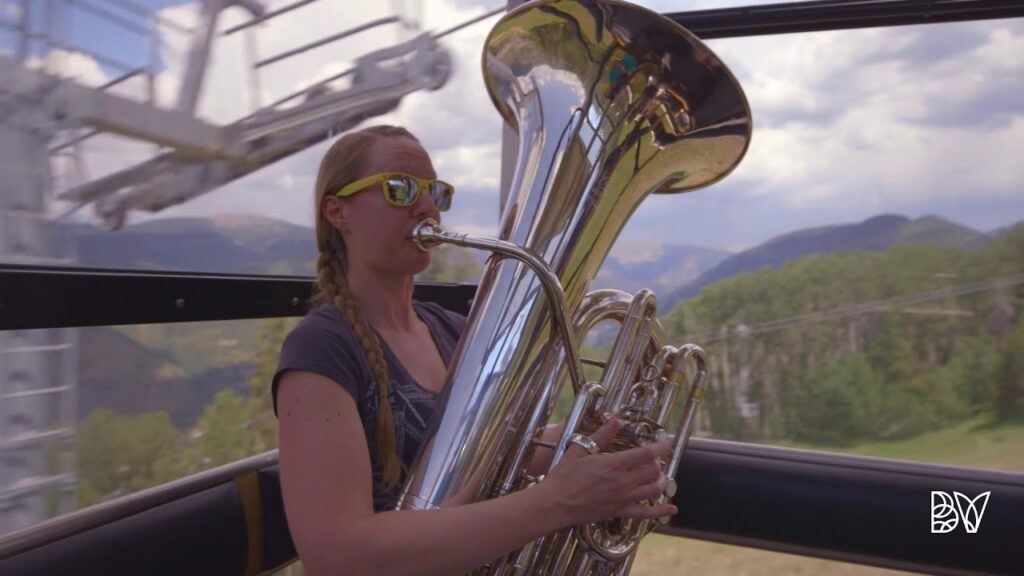Piazzolla, Tango-Étude No. 3
 The powers that be are extending many of the closings and social distance rules, so I am extending my series of performance picks for solo instruments. As a practical matter, a tuba requires a certain amount of social distancing just because of its bulk. Maybe you’ve seen the photos of people wearing pool noodles on their heads at outdoor cafés in Germany in order to maintain proper separation. Taking a tuba everywhere you go—up the ski lift at Vail, for example—would serve the same purpose and possibly allow you to avoid the embarrassment of being photographed with a noodle on your noggin.
The powers that be are extending many of the closings and social distance rules, so I am extending my series of performance picks for solo instruments. As a practical matter, a tuba requires a certain amount of social distancing just because of its bulk. Maybe you’ve seen the photos of people wearing pool noodles on their heads at outdoor cafés in Germany in order to maintain proper separation. Taking a tuba everywhere you go—up the ski lift at Vail, for example—would serve the same purpose and possibly allow you to avoid the embarrassment of being photographed with a noodle on your noggin.
This étude is by Argentinian Astor Piazzolla (1921-1992) who we discussed a few years back when we featured his Tango Suite.
Piazzolla is said to have revolutionized the traditional tango with its Latin and African roots, adding elements of jazz and classical music. The result was a style called Tango Nuevo.
His set of six Tango Études were written for solo flute, an instrument considerably more nimble than the tuba, but they been transcribed for many different instruments.
Tubas come in a variety of shapes and sizes. In American orchestras, one usually finds the C tuba or sometimes the lower double B-flat tuba, popular in bands. In England and Europe, the E-flat tuba and F tuba, with rotary valves instead of pistons, are more common. Richard Wagner created his own tubas for Das Rheingold: higher pitched instruments that use French Horn mouthpieces and have a sound quality somewhere between French Horns and trombones. Sousa, of course, oversaw the design of the sousaphone. With its large front-facing bell shaped to be worn over the players shoulders, it was perfect for marching.
The lowest pitched instruments tend to provide a functional or foundational role in music, which can leave fewer opportunities for most listeners to hear their virtuosic possibilities. I think tuba players (who seem by and large to be a reasonably good-natured lot) particularly revel in presenting this side of their instrument.
The few times I picked up a tuba, it was clear that they required a larger volume of air than my French Horn. That would take some getting-used-to. Maybe Carol Jantsch is engaged here in a little high-altitude training.



